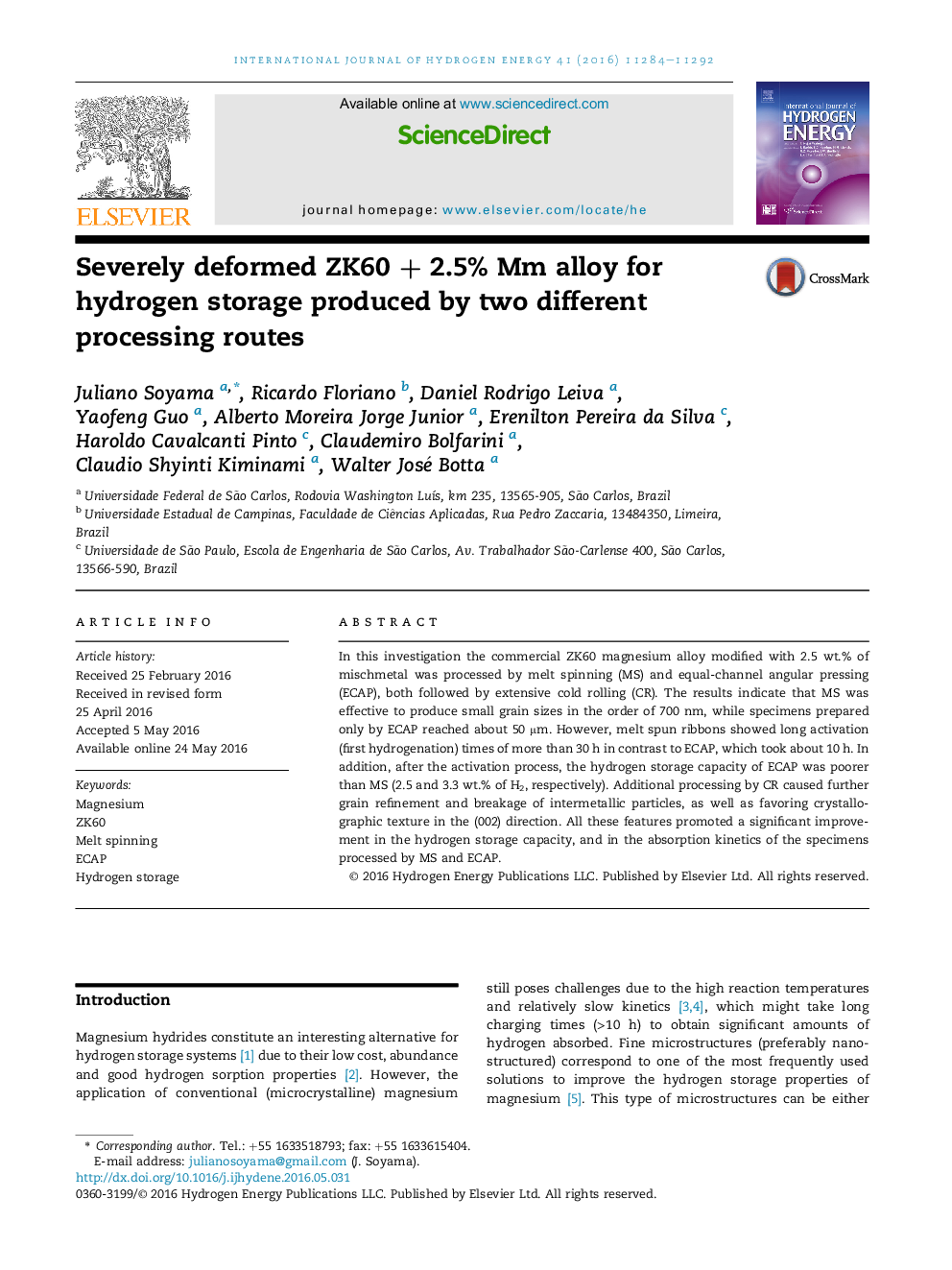| Article ID | Journal | Published Year | Pages | File Type |
|---|---|---|---|---|
| 1269560 | International Journal of Hydrogen Energy | 2016 | 9 Pages |
•Two different routes were used to process ZK60 + 2.5 Mm.•Equal-channel angular pressing and melt spinning were investigated.•The microstructures obtained were correlated with the hydrogen storage properties.•Despite opposite activation behaviors, comparable properties after activation arose.•ECAP was however more advantageous as preliminary processing method.
In this investigation the commercial ZK60 magnesium alloy modified with 2.5 wt.% of mischmetal was processed by melt spinning (MS) and equal-channel angular pressing (ECAP), both followed by extensive cold rolling (CR). The results indicate that MS was effective to produce small grain sizes in the order of 700 nm, while specimens prepared only by ECAP reached about 50 μm. However, melt spun ribbons showed long activation (first hydrogenation) times of more than 30 h in contrast to ECAP, which took about 10 h. In addition, after the activation process, the hydrogen storage capacity of ECAP was poorer than MS (2.5 and 3.3 wt.% of H2, respectively). Additional processing by CR caused further grain refinement and breakage of intermetallic particles, as well as favoring crystallographic texture in the (002) direction. All these features promoted a significant improvement in the hydrogen storage capacity, and in the absorption kinetics of the specimens processed by MS and ECAP.
